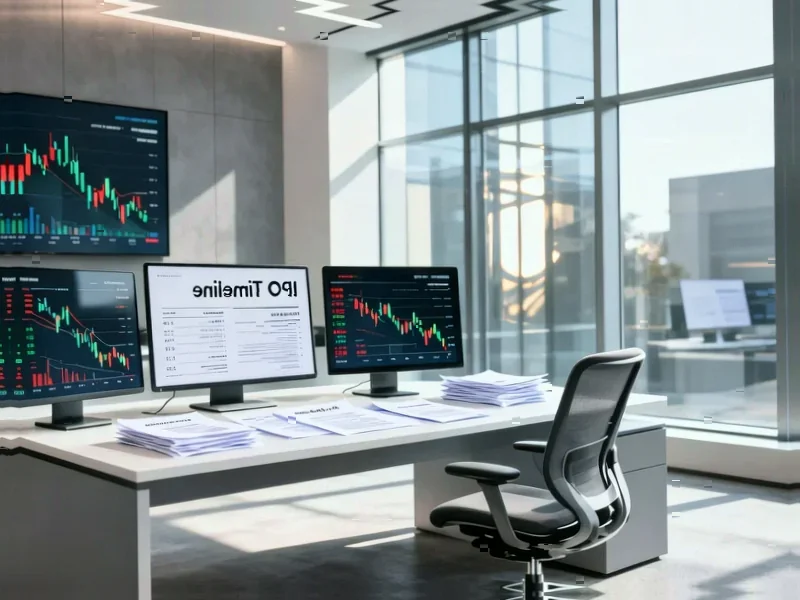According to Techmeme, OpenAI CEO Sam Altman and Microsoft CEO Satya Nadella discussed their partnership’s future in a recent podcast interview, revealing that OpenAI’s revenue has already exceeded $1.3 billion and targeting $100 billion in revenue by 2027. The executives detailed a massive $3 trillion AI infrastructure buildout required to support next-generation models, while addressing questions about OpenAI’s unique nonprofit structure and its impact on governance. The discussion covered Microsoft’s strategic investment in OpenAI, AI security concerns, and the technical resilience needed for future systems as the company scales toward unprecedented revenue targets within three years.
The Infrastructure Challenge Behind $3T Buildout
The $3 trillion infrastructure figure that Altman referenced represents one of the most ambitious technical scaling challenges in computing history. Unlike traditional cloud infrastructure that scales linearly with demand, AI training requires specialized hardware clusters that must be provisioned years in advance. The computational density required for next-generation models likely involves exascale computing systems that combine thousands of GPUs with custom silicon like Microsoft’s Maia chips. What makes this particularly challenging is that much of this infrastructure becomes obsolete within 2-3 years as model architectures evolve, creating a continuous capital expenditure cycle that dwarfs even the largest tech infrastructure projects to date.
The Technical Economics of $100B Revenue
Reaching $100 billion in revenue by 2027 would require OpenAI to fundamentally reshape enterprise software economics. Current revenue estimates exceeding $1.3 billion already position OpenAI among the fastest-growing SaaS companies, but the path to $100B involves technical innovations beyond just model improvements. The company would need to achieve near-ubiquitous adoption across Fortune 500 companies while developing entirely new revenue streams through developer platforms, inference services, and enterprise licensing. The computational cost per API call must decrease dramatically while maintaining quality, requiring breakthroughs in model efficiency that haven’t yet been demonstrated at scale.
Nonprofit Structure Meets Commercial Scale
OpenAI’s unique governance structure creates technical and operational tensions that become more pronounced at this scale. The nonprofit oversight means that technical decisions about model safety and capability deployment must balance commercial objectives with the organization’s original mission. This becomes particularly challenging when dealing with enterprise customers who demand maximum performance and customization. The technical architecture must incorporate safety mechanisms that don’t exist in commercial AI systems, creating additional complexity and cost that pure-profit competitors wouldn’t face.
Microsoft’s Strategic Infrastructure Role
The Microsoft partnership becomes increasingly critical as OpenAI scales toward these targets. Microsoft’s Azure infrastructure provides the computational backbone, but the relationship is more complex than typical cloud hosting. The partnership likely involves co-design of specialized AI infrastructure, including the custom silicon and networking architecture required for training models that don’t yet exist. As discussed in the interview, this creates interdependencies where Microsoft’s infrastructure roadmap must align perfectly with OpenAI’s model development timeline, a coordination challenge that becomes exponentially more difficult at trillion-dollar scale.
AI Security at Unprecedented Scale
The security implications of deploying $3 trillion worth of AI infrastructure are staggering. Unlike traditional systems where security focuses on data protection, AI security must address model integrity, training data poisoning, and adversarial attacks at a scale never before attempted. The discussion about AI security and resilience hints at architectural decisions that will shape how these systems are protected. At this scale, even minor vulnerabilities could have catastrophic consequences, requiring security frameworks that don’t yet exist for systems of this complexity and capability.
Technical Implications for the AI Ecosystem
OpenAI’s scaling ambitions will force the entire AI ecosystem to adapt. The computational requirements alone will strain global semiconductor supply chains and energy infrastructure. Competitors will need to match this scale or find specialized niches, while enterprises must prepare for AI capabilities that could fundamentally transform business operations. The technical standards and interoperability requirements for systems operating at this scale will likely become de facto industry standards, giving OpenAI unprecedented influence over the direction of AI development for years to come.




